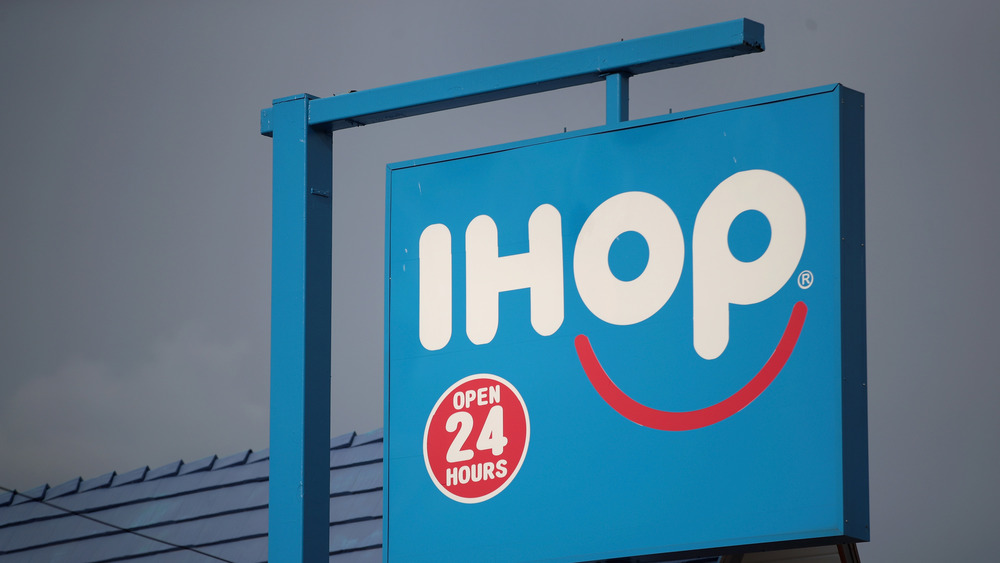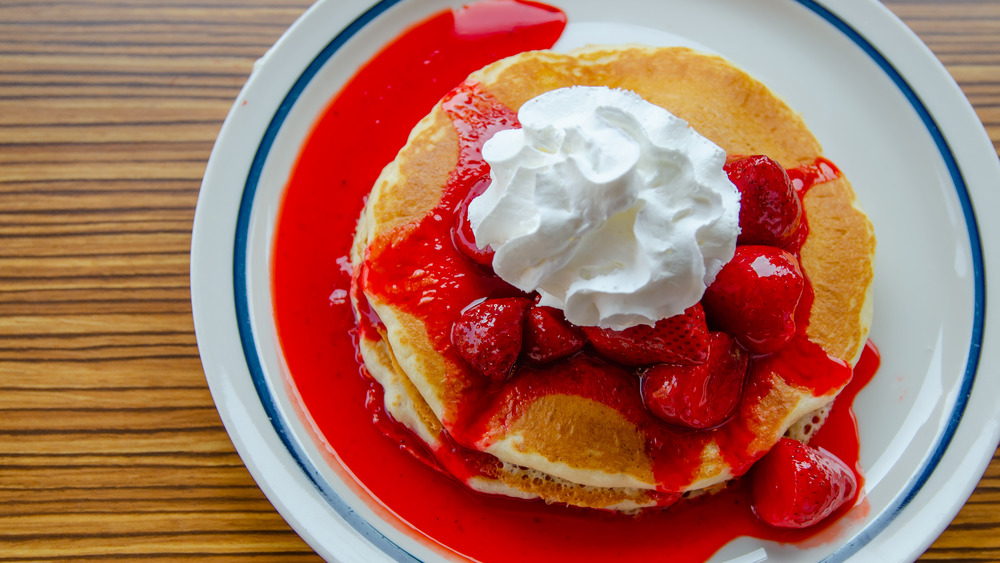The Strange Scientific Study IHOP Pancakes Were Used In
Move aside, Wheaties — IHOP pancakes are the real breakfast of champions. You can't go wrong with a mile-high stack of fluffy flapjacks drowning in melted butter and sugary sweet syrup (and whipped cream and chocolate sauce if you really want to indulge). But while the popular chain's signature dish is most often served on a breakfast table with a side of bacon and eggs, IHOP pancakes have also been spotted in another, much more unexpected spot: a science lab.
Back in 2003, researchers used IHOP pancakes in a study conducted by Texas State and Arizona State University that was later published in the Annals of Improbable Research. You might think the study would have to do with the breakfast habits of Americans or the nutritional value of said flapjacks, but it actually had nothing to do with food at all. Surprisingly, the pancakes from IHOP were used to examine the geography (and more specifically, the topography) of the United States.
Is Kansas really as flat as a pancake?
If you're familiar with the Midwest, you've likely heard the saying that Kansas is as flat as a pancake. And that's exactly what the researchers in the 2003 study set out to prove. Their verdict? After adjusting for size and examining the surface elevation of both the state and the average IHOP pancake, they found that Kansas is actually flatter than a pancake. In fact, for Kansas not to as flat as a pancake, it would need to have a mountain similar in height to that of Mount Everest.
That isn't the only study that's compared state topography to IHOP pancakes. In 2014, another set of researchers wanted to find if any other states were also as flat as the popular flapjacks. They concluded that there are six such states: Florida, Illinois, North Dakota, Louisiana, Minnesota, and Delaware (via the Atlantic). Who knew your breakfast order could be used for science?!

